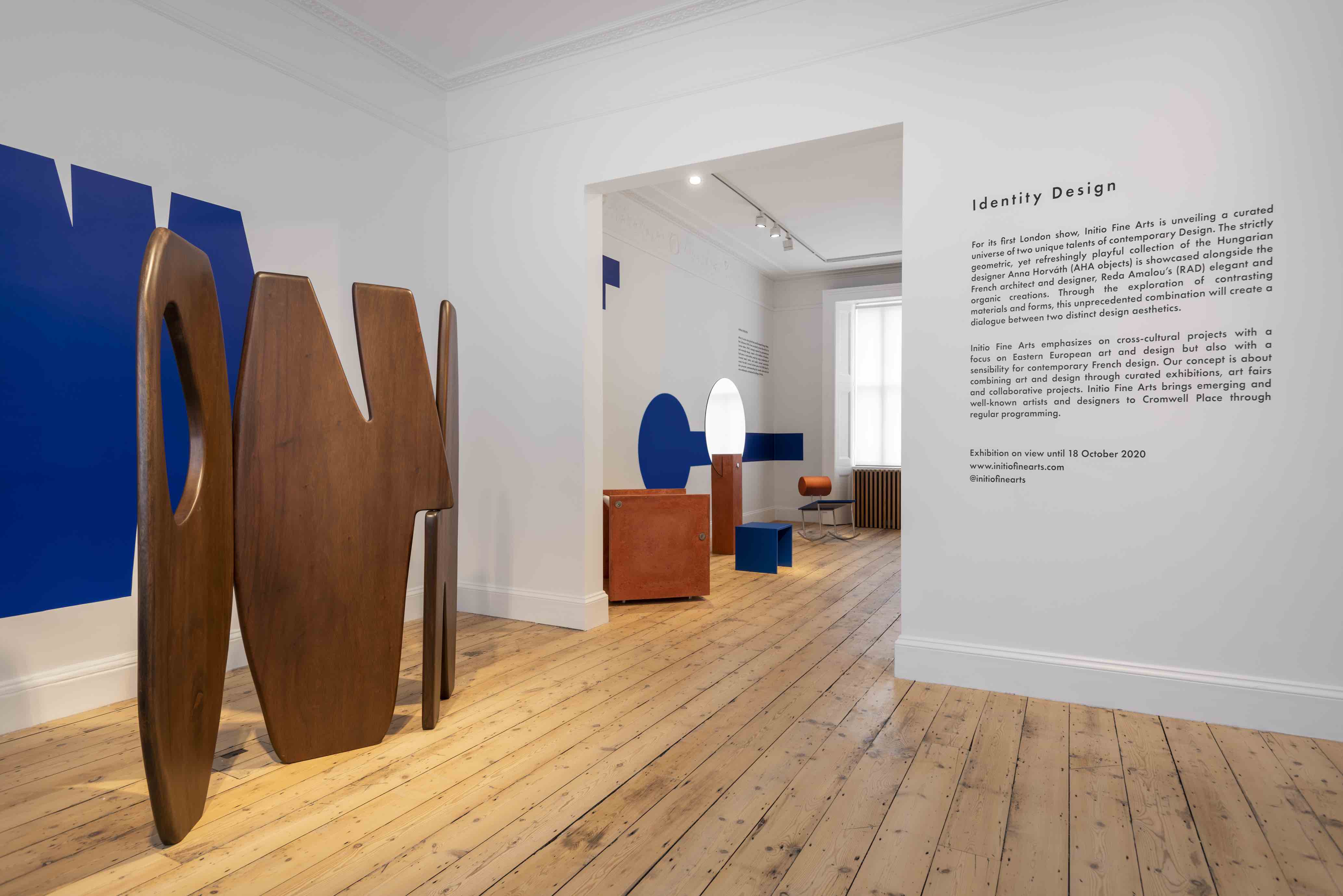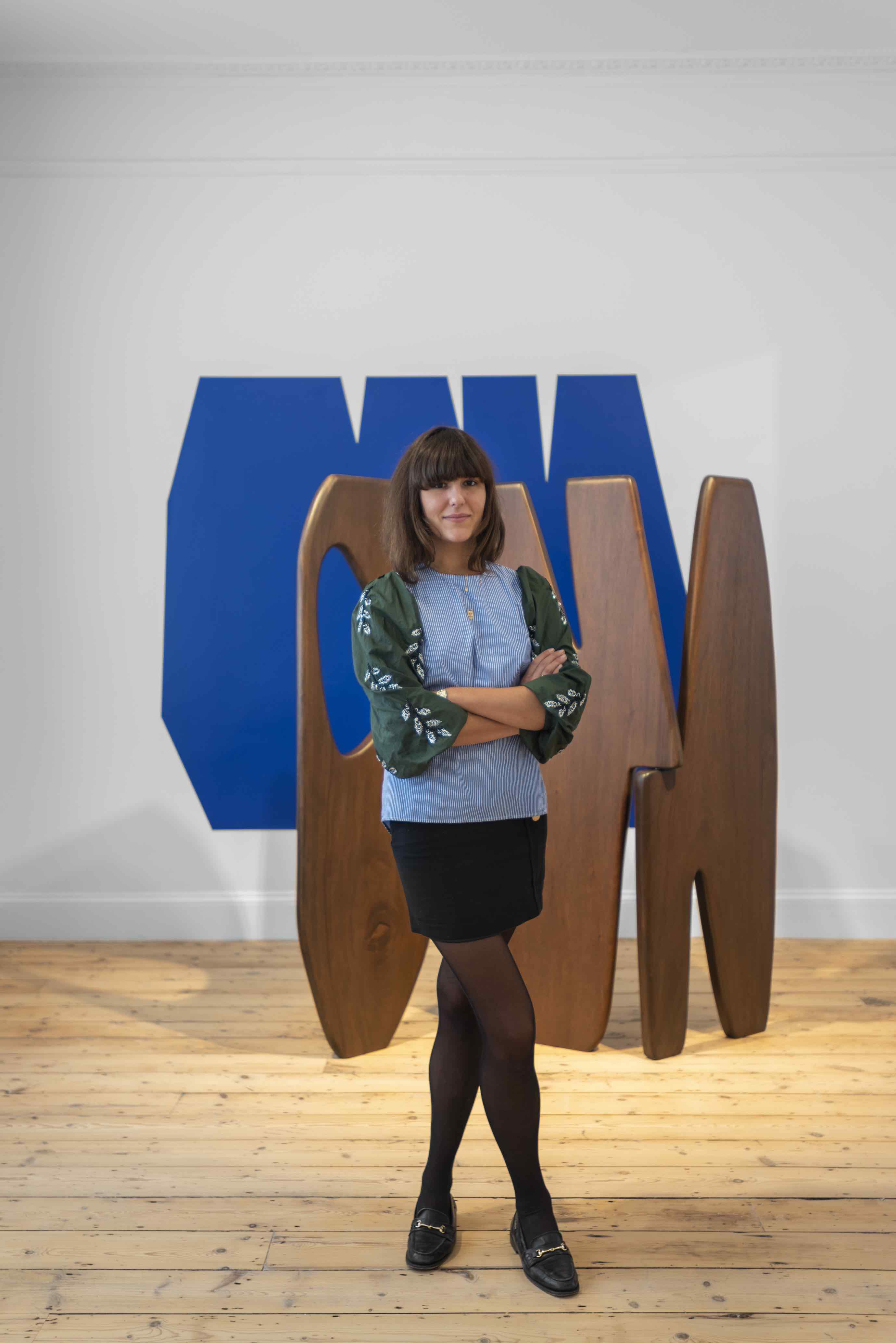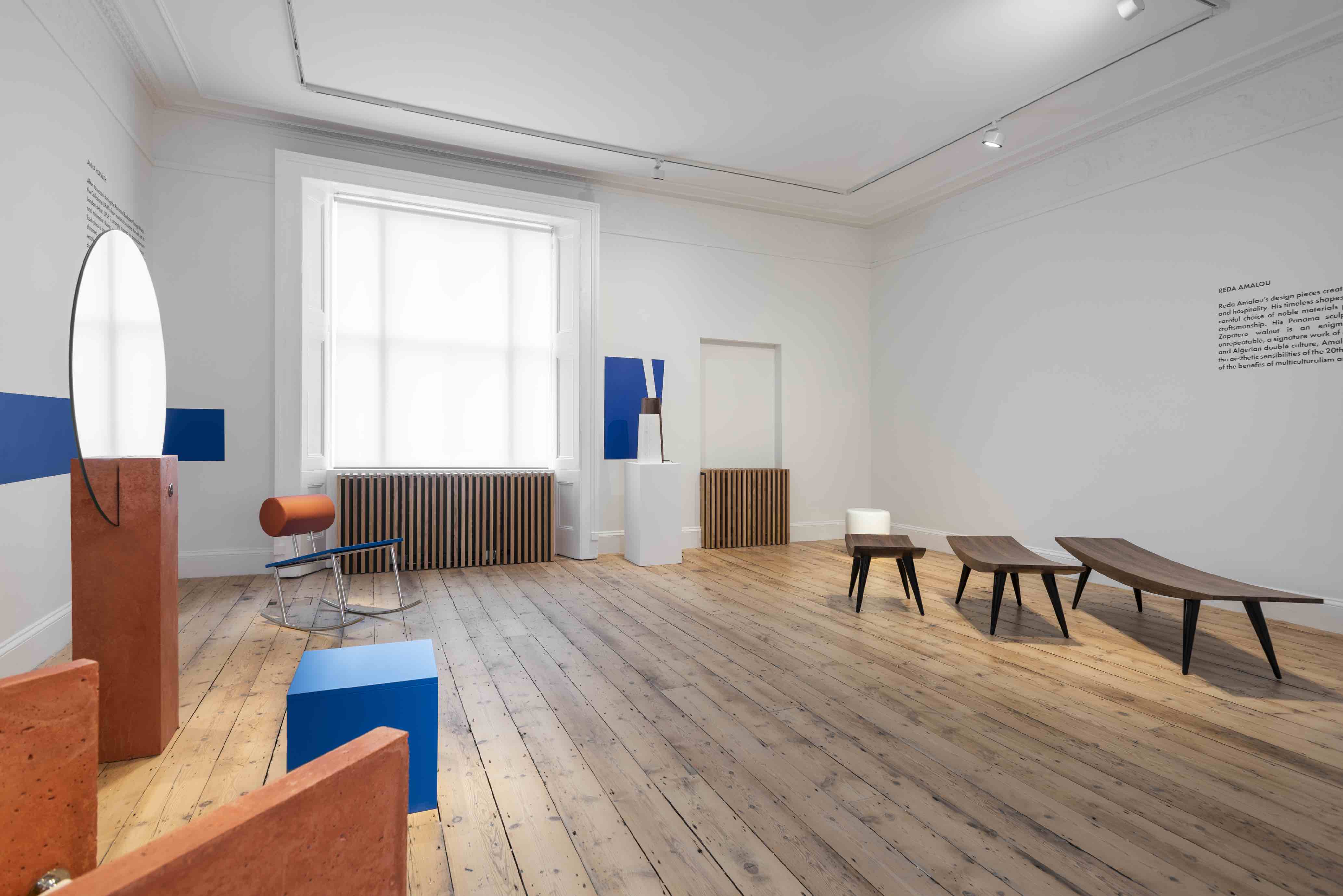Identity Design
Interview with Marie Tourre de Robien
This autumn, a new, progressive contemporary gallery, Initio Fine Arts, was launched in London with works by a Hungarian and an Algerian-French artist. This choice is not by accident as one of Initio’s focus is on Eastern European design. Judit Jankó talked to Marie Tourre de Robien, the curator of the exhibition and one of the co-founders of the gallery, about the connection of the two designers and, most of all, how we are all interconnected, how cross-border programmes can be carried out, and how sensitive and multicultural dialogues can be pursued.
What do you find interesting in design?
Marie Tourre di Robien (MTR): I did an Art History BA in Paris and an MA in Fine and Decorative Arts at the Sotheby’s Institute of Art in London. I started working for an art deco gallery where I learned a lot about the vintage design market. From there on I was particularly interested in design. I joined the design department of Sotheby’s in London where I was working on contemporary design sales. What interests me in design is that I consider it as being part of contemporary art, for me each piece of design is a sculpture with something even better than a sculpture: functionality.

Are you more of a creator or more of a theorist?
I would say I am more of a seeker (closer to the creator), I am constantly keeping an eye out for new talents and thinking about how to promote them.
What do we need to know about Anna Horváth? What do you consider important in her design work?
Anna Horváth is a designer who has an MA in Narrative Environments from Central Saint Martins, University of the Arts London. She also has a degree from Moholy-Nagy University of Art and design in Budapest. She is very talented and has a distinctive aesthetic universe that involves playful geometry and inspiration from postmodernism. I first met Anna’s work at a design exhibition at Balna in Budapest (Budapest Design Week) and contacted her to know more about her work. Thanks to my Hungarian fiancé, Balint Ferenczy, we spend a lot of time in Budapest, and I have become interested in Eastern European designers.
I really appreciate Anna’s innovative talent, her aesthetic world is unique and highly recognizable. As opposed to the industrial mass production, she is more interested in cutting edge, innovative and fresh creations. There is always a story behind her pieces and deep respect for the environment and the materials she uses.
Tell us about Reda Amalou! You are both French, does this make your collaboration easier?
Reda Amalou is a French architect and designer. I had always admired his work and really wanted to exhibit his creations. He has more than 20 years of experience as an architect with the desire to fill the space around us with emotions. This way design becomes an integral part of his work. As we are both French we have the same mother tongue but it doesn’t mean that the working process with him differs from that of with other designers of different nationalities.

Do we have different visions according to our different roots or our roots don’t really matter anymore in our globalized world?
I think the place where you were born, you were growing up, you were educated, has great importance and it will surely influence how you see the world. But you must stay open to different cultures, different identities. Our own identity must be strong, but not necessarily exclusive. We need to stay flexible for changes. Both designers share this capacity. Although Anna is Hungarian and Reda is French-Algerian, they are both highly open-minded and creative people. That gives beauty to Art.
You all live in different places (Paris, London, Malta) How do you still manage to work together?
I have experience in organizing exhibitions with artists who are based in different parts of the world. It involves a lot of logistics and coordination. In today’s super-connected world, it is very easy to communicate, to have video meetings. Luckily, the English language facilitates our communication.
What are the similarities and differences between these two artists?
The two artists have very different aesthetics, they use different materials and finishes, their techniques differ, their inspirations come from very different places, in many ways they are the opposite of each other. However, if you look behind the physical aspects of their work, both designers are inspired by their experiences, travels, and cultural identity. They are both engaged in sustainability, recycling materials such as construction waste in the case of Anna and Panamien wood coming from the Gatun lake in the case of Reda. They do have similarities in their working process, but the beauty of the exhibition comes from their differences. Of course, it is not always easy to find the balance and harmony between different artists; this is the greatest challenge for me as a curator.
What did you find the most interesting about them?
I was seduced by Anna’s latest project where she got supported by the Malta Art Fund. In this project, she could choose material from local buildings listed for demolition and could create design pieces from this construction waste to commemorate those buildings once they are gone. Anna’s project aims at provoking conversation about urban sustainability and the changing architectural landscape in Malta just as in any other area of the world. I admire how she pushes the boundaries of contemporary design and creates pieces that are conceptual but also have a strong visual identity.
Reda Amalou for me represents the beauty of the timeless design. Craftsmanship and details are at the heart of his approach; he uses techniques like eggshell lacker which was used in ancient Vietnam and during the Art Deco Period. He masters those techniques and creates contemporary pieces that are elegant, innovative but also respectful of past traditions.
What is ’Identity Design’?
Each of the designers has a strong conceptual identity visually. I wanted to confront those two identities and have the works of each designer contrast and complement each other. I want to show that contemporary design is an integral part of contemporary art.
Initio Fine Arts – What kind of a gallery is this?
Initio is a gallery that shows contemporary art and design. We would like to have a different approach than a traditional white cube-like gallery, our focus is on cross-cultural projects that we want to show in different European cities. We are particularly interested in Eastern EU design and art, because I feel there is a lot of talent, but they are not well-managed, promoted, or presented. There is a huge potential in CEE high-end design. We also want to keep our focus open to the west, and to help some older amazing artists, like Sándor Kecskeméti, who should deserve way more attention. As of now, we don’t have a permanent space, we rather spend our resources on great quality pop-ups and international projects. But we can always come back to London to do shows at Cromwell Place as we are members of this gallery association (the only gallery from the CEE).

What kind of feedback did you get?
We got really good feedback from the London audience; we had the design museum patrons visiting us particularly. We were lucky to be able to exhibit at the incredible location of Cromwell Place in front of a large audience. We were the only gallery showing contemporary design in the building and that really made us stand out. Apollo Magazine, The Telegraph, Antiques Gazette Trade magazine featured our show, so the press responses were great. Also, we were able to sell artworks.
What are you working on now? What is your ars poetica, what kind of projects do you want to create?
Our next exhibition will most probably be in Budapest showing sculpture and design together. I want to work on projects which show art & design with special scenographies. My aim is to create an environment where the viewer can immerse himself among the art objects, more than in a traditional gallery setting.
Identity Design was on view during October at Cromwell Place, London.